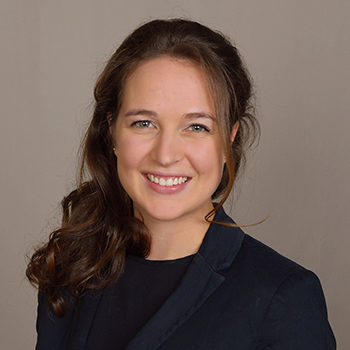Smart technology, which refers to AI and other digital technologies that replace human decision-makers, is on the rise. While smart technology has obvious implications in sectors like the automotive industry, personal electronics, home automation, and more, the technology will shape and shift the way nonprofits and philanthropy operate, too.
In their new book, “The Smart Nonprofit: Staying Human-Centered in An Automated World,” authors Allison Fine and Beth Kanter delve into the significant power-shifting effects of the impending rise of smart technology’s use in the nonprofit sector. They also address the ethical implications of the technology and provide guidance on how to approach becoming smart-enabled social impact organizations. Following the release of their new book, I chatted with the authors about the potential as well as the pitfalls of smart tech for philanthropy.
Chloe Heskett: What is smart tech and how is it different from other technology foundations have been using?
Allison Fine & Beth Kanter: Smart tech is an umbrella term we created for advanced technologies that include Artificial Intelligence (AI) and its subsets and cousins, such as machine learning, natural language processing, smart forms, chatbots, robots, and more. What’s different about these technologies is that they make decisions for and instead of people. This is the kind of technology that only, say, NASA, had access to until just a few years ago. Now everyday people and organizations can buy commercial products with smart tech embedded in it.
CH: Can you share some of the ways that foundations or their donors might (or perhaps already do) employ smart tech?
AF & BK: Digital platforms matching donors with causes are not new. What is new is the ability of platforms to match donors and causes based on the specific interests of donors and keep them informed about the impact their gift is making in real time. There are many smart tech tools that can do this, including Salesforce’s Philanthropy Cloud. Nick Bailey, the Salesforce General Manager of Philanthropy Cloud, said, “It [the algorithm] can help employees find and connect with the causes they’re passionate about. It allows us to do personalized philanthropy at scale.”
Deluxe, a 105-year-old company that actually created the checkbook, became a Philanthropy Cloud client in 2020 — just in time for the pandemic and protests over racial injustice to erupt. The company implemented eight different campaigns raising a total of $260,000 from employees.
Another approach to smart tech for philanthropy is the advent of “robo advisors,” chat bots available to donors at any level providing advice on charitable giving to their menus of other financial investment and savings options.
CH: You describe smart technology as having a significant power-shifting effect – what do you mean by that? Can you discuss the potential implications of smart technology for foundations’ or major donors’ decision-making processes?
AF & BK: Smart tech adds to the growing ecosystem of ways to give to causes. It can provide insights and intelligence to philanthropies to help them give strategically. Perhaps more importantly, it can help smaller grantees be found.![]() For instance, after years of preparing their data to be used in a smart tech system, Candid, a leading source of information on nonprofit and philanthropic efforts, has been manually coding and labeling data for use by smart tech for years. Candid’s Vice President of Products Jake Garcia notes, “Now that we have enough data in the system that has been accurately categorized, [program officers and donors] can do queries such as ‘What nonprofits are working on clean water projects and are based in New York and build wells in Ethiopia?’”
For instance, after years of preparing their data to be used in a smart tech system, Candid, a leading source of information on nonprofit and philanthropic efforts, has been manually coding and labeling data for use by smart tech for years. Candid’s Vice President of Products Jake Garcia notes, “Now that we have enough data in the system that has been accurately categorized, [program officers and donors] can do queries such as ‘What nonprofits are working on clean water projects and are based in New York and build wells in Ethiopia?’”
CH: Can you talk a little bit about “embedded bias”? What can (or should) philanthropy do about this issue as the use of smart technology increases?
AF & BK: People tend to think of the work done by computers and robots as incapable of being swayed by emotions, and therefore incapable of being biased or sexist or unfair. However, the code that powers smart tech was at some point created by people, and carries forward their opinions, assumptions, and biases — whether implicit or explicit.
As the renowned data scientist Cathy O’Neil says, “Algorithms are opinions embedded in code.” We call the bias created inside of smart tech systems embedded bias. There are two main reasons embedded bias is prevalent. First, programmers, who continue to overwhelmingly be white men, make literally thousands of choices beneath the hood of smart tech that the rest of us can’t see. Second, smart tech requires massive data sets to learn to recognize patterns and make decisions.
Many large data sets in social service areas like housing or hiring were racist by design. In using these data sets to teach “smart tech” matching patterns, organizations were unwittingly paying forward historic racism. Once bias is baked into smart tech, not only is it likely to stay there forever; it becomes self-reinforcing as the tech system looks for the same patterns over time.
It is not possible to eradicate embedded bias, rather organizations need to know what questions to ask of developers to do their best to mitigate it.![]()
CH: At one point, you touch on what seems like a little bit of a difficult, opaque issue: the use of big data in funders’ evaluation processes. What role do you see smart technology playing in that process? Are there limitations to that?
AF & BK: The best way to have a positive impact on social change is to invest in program evaluation to create the quality results data needed to power smart tech. However, there is one enormous caveat about program evaluation in the autonomous world: program evaluation data is not the same data generated by smart tech.
Peter York and Michael Bamberger point out that part of the problem is that traditional evaluators have been slow to embrace big data. This isn’t surprising given that big data has been collected without their input, in another department, and for different purposes. We need to use big data to inform program evaluation efforts. For instance, big data can be used to gain insights on shifts of attitudes and behaviors at scale using technologies like chat bots.
CH: I think it’s clear that smart technology has a huge potential upside, both for nonprofits and for foundations, but it seems like there are some risks involved, too — from exacerbating issues of discrimination, exclusion, and invisibility, to interpreting and using data in ways it wasn’t designed for. Are you optimistic that we can employ smart technology in the nonprofit landscape so that it is a net positive? Do foundations have a role in making that happen?
AF & BK: Foundations have a critical role to play in both their own responsible and ethical use of smart tech as well as investing in the capacity of their grantees to use smart tech well.![]() One specific way that foundations can invest in the great use of smart tech data is in the development of nonprofit data collaboratives. Most organizations won’t have the resources to hire their own data scientists. Nonprofit data collaboratives will make it more likely that there is full transparency for the use of the data. It also removes commercial companies from the opportunity to obfuscate or sell the data. A philanthropist could invest in, say, a data collaborative on hunger in Cincinnati to understand where and how hunger manifests itself in the city and where and how giving will have the greatest impact. Giving Tuesday is an example of an effort that has created a data collaborative to assess their efforts worldwide.
One specific way that foundations can invest in the great use of smart tech data is in the development of nonprofit data collaboratives. Most organizations won’t have the resources to hire their own data scientists. Nonprofit data collaboratives will make it more likely that there is full transparency for the use of the data. It also removes commercial companies from the opportunity to obfuscate or sell the data. A philanthropist could invest in, say, a data collaborative on hunger in Cincinnati to understand where and how hunger manifests itself in the city and where and how giving will have the greatest impact. Giving Tuesday is an example of an effort that has created a data collaborative to assess their efforts worldwide.
Vilas Dhar and Kay Firth-Butterfield wrote in a recent Chronicle of Philanthropy op-ed, “Philanthropic organizations should play a central role in supporting efforts to make data more accessible to grantees through vehicles such as data cooperatives and data trusts. These entities link data held by otherwise separate groups, providing even small nonprofits with robust data and analysis capabilities.”
CH: Broadly speaking, do you think smart technology has the potential to make philanthropy more effective?
AF & BK: Yes! Smart tech has enormous potential and power to help donors make more informed decisions, customize the matching of donors and causes, and generate much larger data sets from which to glean insights and intelligence for strategic giving.![]()
However, in order for all of these things to happen, philanthropic leaders need to fully understand what smart tech is and how to use it well.
Allison Fine is a writer and strategist on the use of technology for social good. She is the author of the award-winning “Momentum: Igniting Social Change in the Connected Age” and “Matterness: Fearless Leadership for a Social World” and co-author with Beth Kanter of the best-selling “The Networked Nonprofit.” Follow her on Twitter at @afine.
Beth Kanter is a thought leader and trainer in digital transformation and well-being in the nonprofit workplace. She is the co-author of the award-winning “Happy Healthy Nonprofit: Strategies for Impact without Burnout” and co-author with Allison Fine of “The Smart Nonprofit.” Follow her on Twitter at @kanter.
Fine and Kanter’s book “The Smart Nonprofit: Staying Human-Centered in An Automated World” was released in March 2022 and is available here.

NEVER MISS A POST
Sign up to receive notifications.



